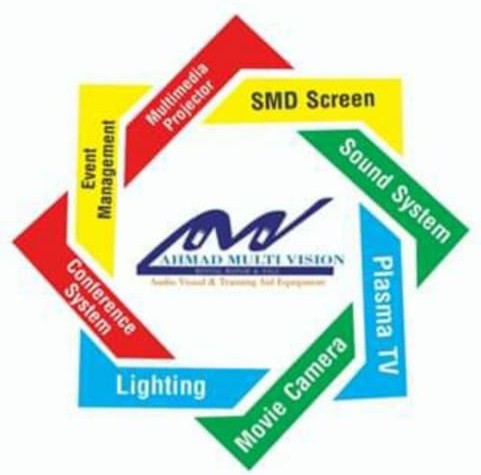All Kinds of Stages & Lights
Social & Corporate Events Management
Overview
In event production, stages and lighting form the foundation of the overall experience. Whether it’s a corporate event, wedding, concert, or fashion show, the right stage setup and lighting design enhance the theme, engage the audience, and bring the entire event to life.
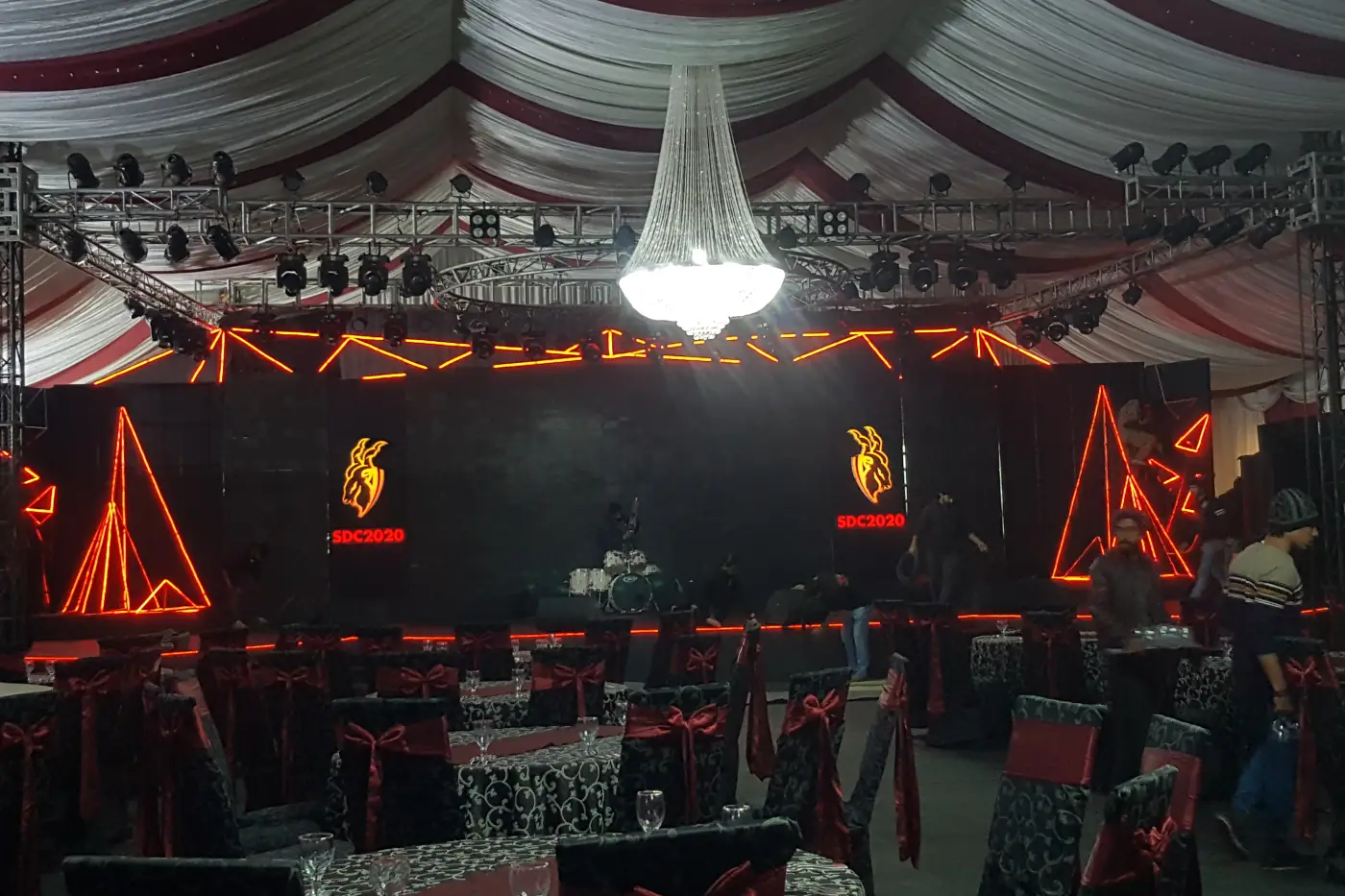
Types of Event Stages
1. Traditional Stages
- Materials Used: Wooden frames, plywood, MDF boards, carpeting, nails/screws.
- Common Names:
- Proscenium Stage (raised platform with a front arch)
- Thrust Stage (extends into the audience)
- Platform Stage (simple, flat, and modular).
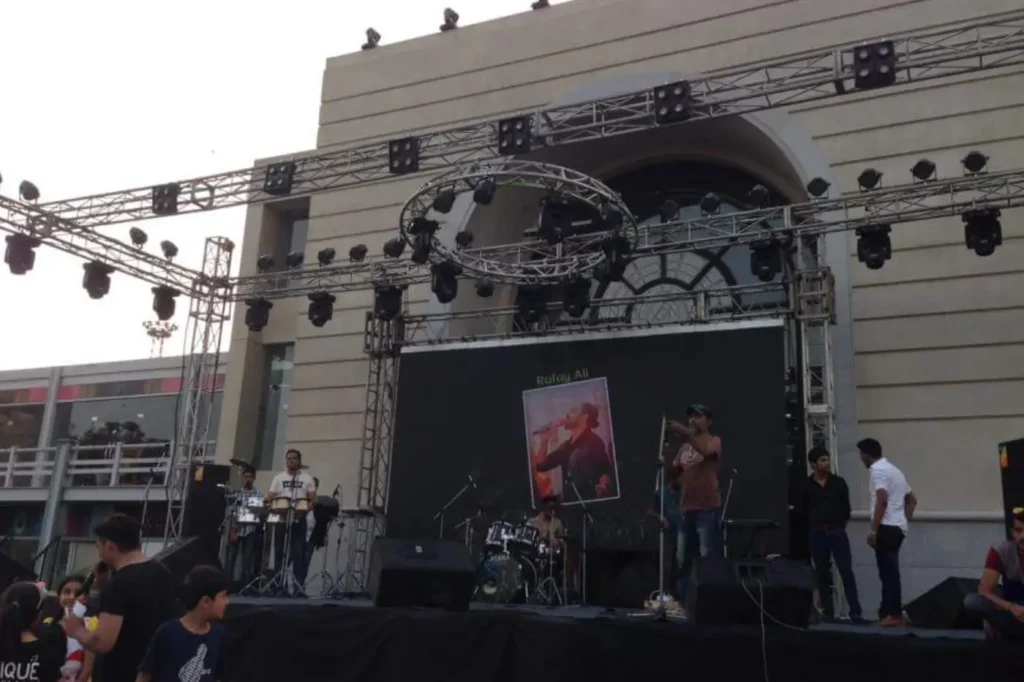
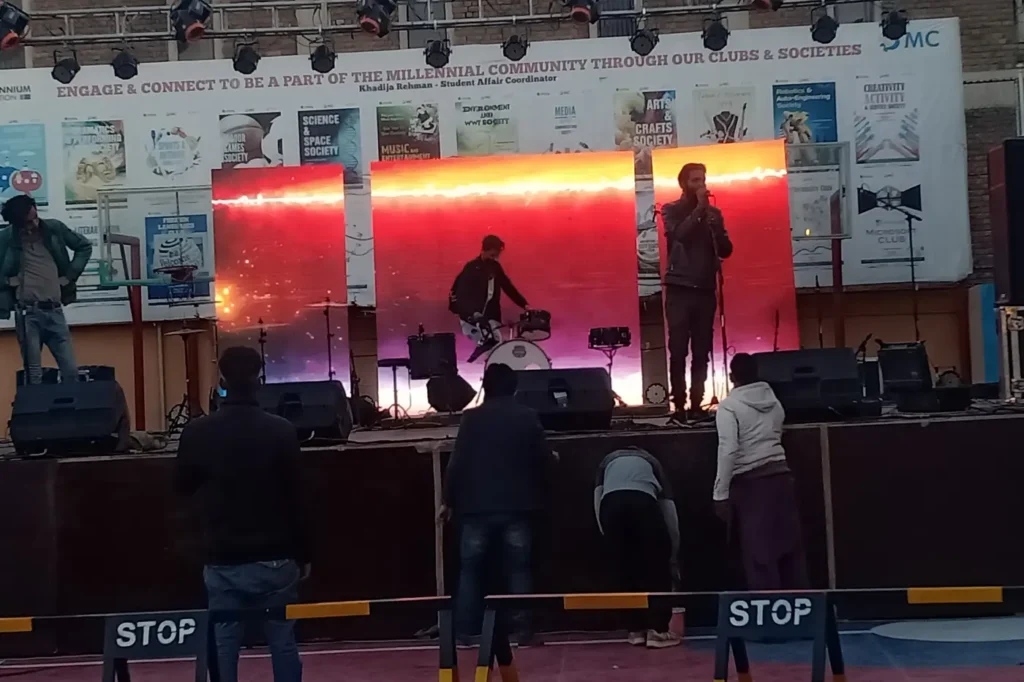
2. Modular / Prefabricated Stages
- Materials Used: Aluminum frames, steel supports, interlocking deck panels (fiberglass/plastic), rubber flooring.
- Common Names:
- Portable Stage (lightweight, foldable)
- Riser System (adjustable height tiers).
3. Outdoor / Concert Stages
- Materials Used: Steel trusses, aluminum scaffolding, weather-resistant plywood, non-slip surfaces, LED panels.
- Common Names:
- Open-Air Stage (for festivals)
- Bandshell (acoustic half-dome design)
- Scaffold Stage (built on metal frameworks).
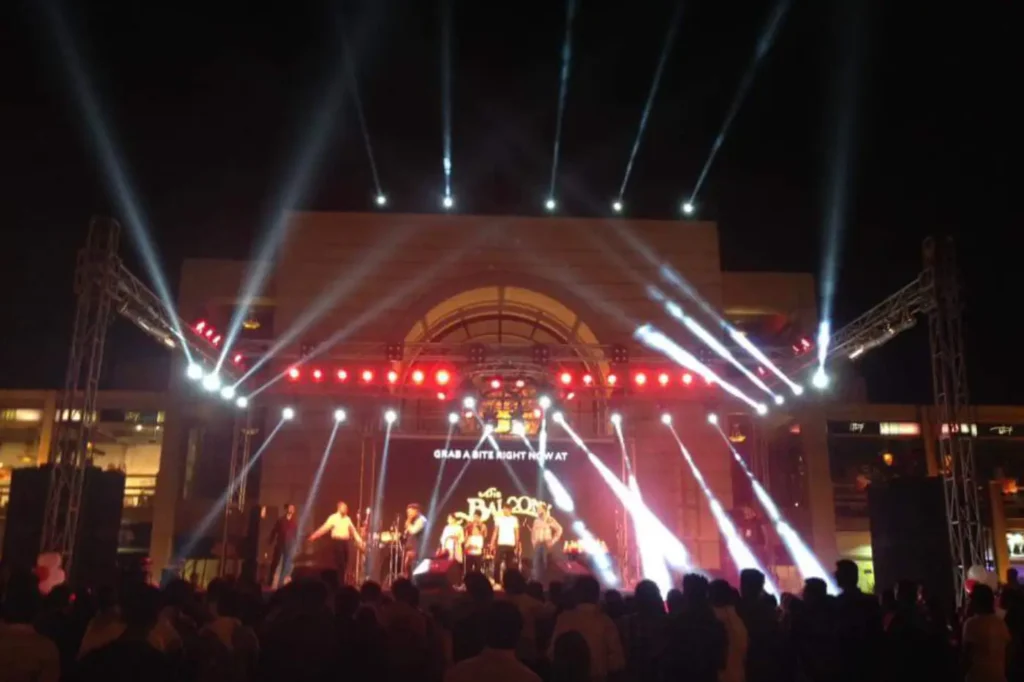
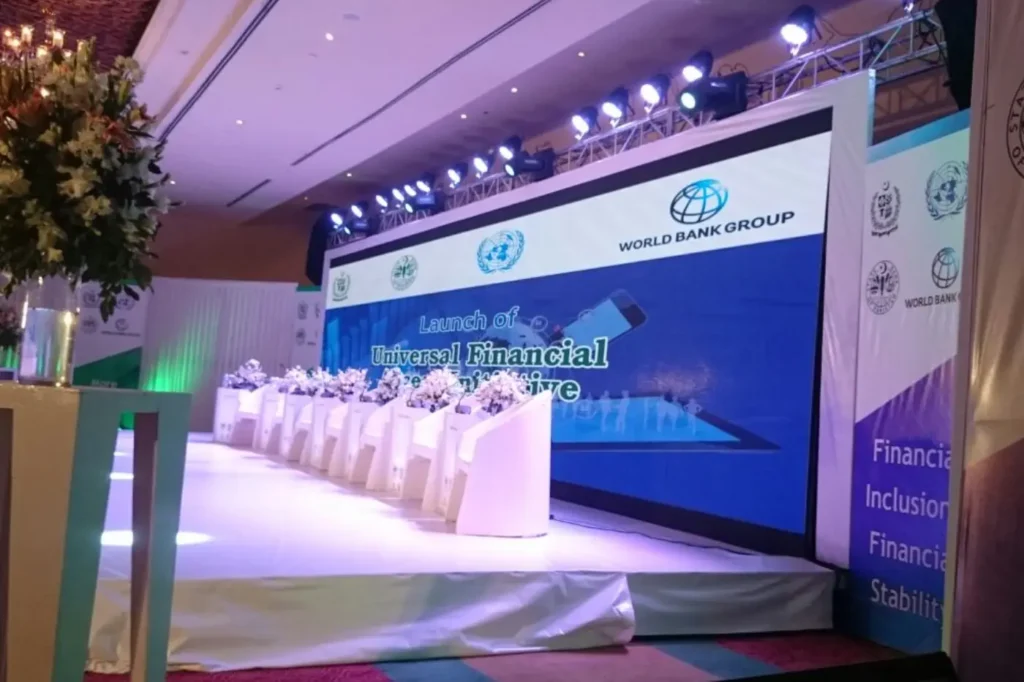
4. Themed / Custom Stages
- Materials Used: Fiberglass molds, acrylic sheets, foam sculptures, LED screens, faux finishes (e.g., stone/wood textures).
- Common Names:
- Runway Stage (fashion shows)
- 360° Stage (audience surrounds the stage)
- Immersive Stage (projection-mapped).
5. Hydraulic / Elevating Stages
- Materials Used: Steel pistons, hydraulic systems, reinforced platforms, safety railings.
- Common Names:
- Lift Stage (for dramatic reveals)
- Orchestra Pit Lift (theaters).
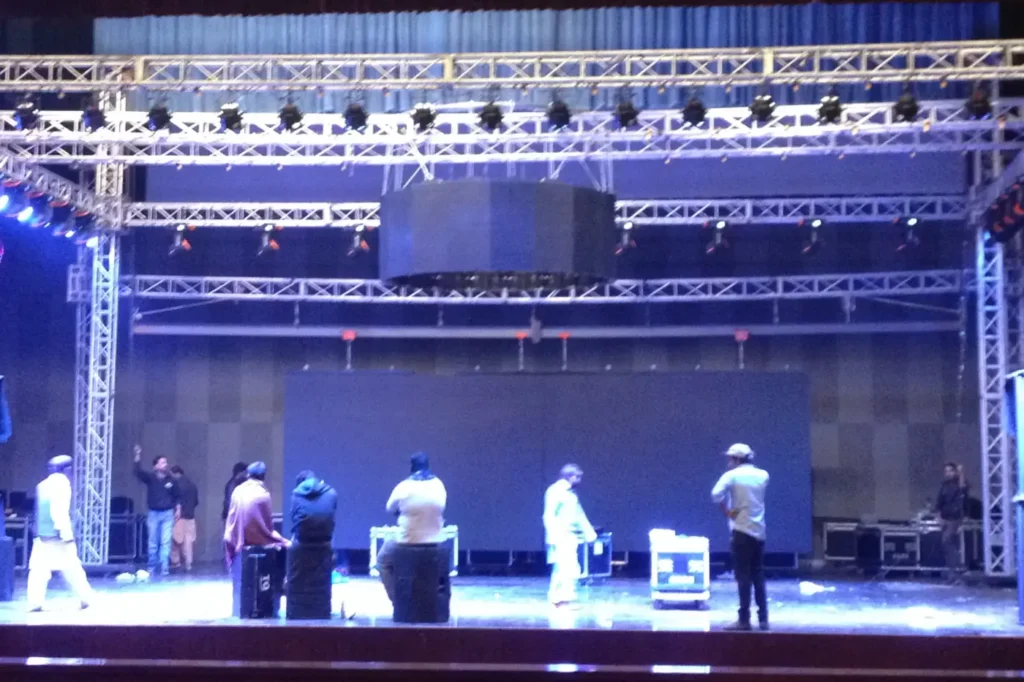
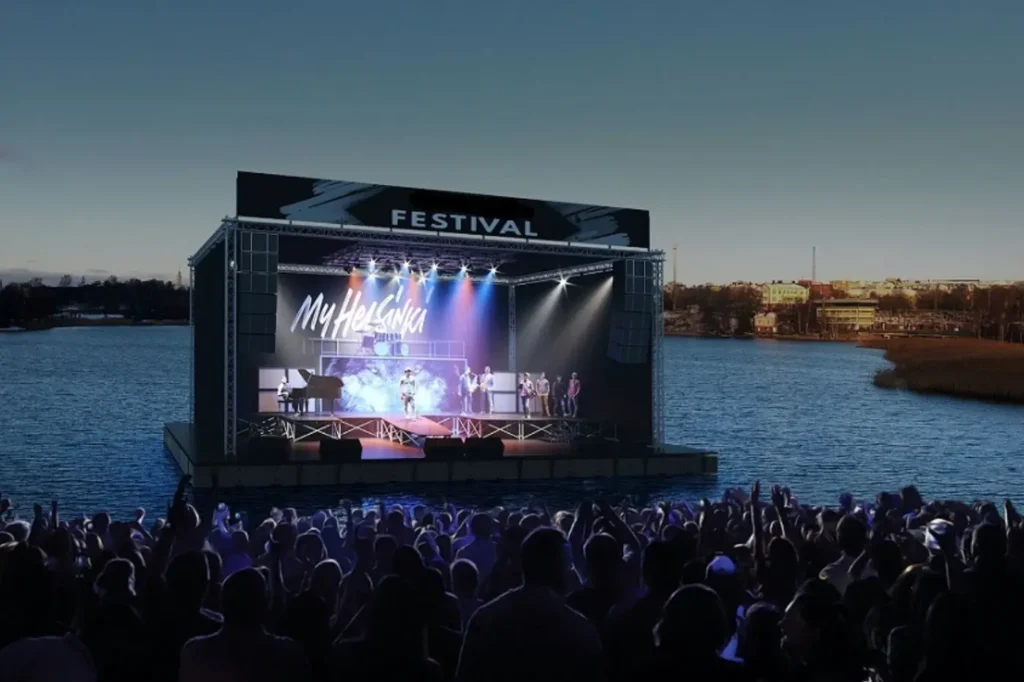
6. Floating Stages
- Materials Used: Pontoon bases, marine-grade aluminum, waterproof decking.
- Common Names:
- Barge Stage (over water bodies)
- Dock Stage (for lakeside events).
7. Interactive / Digital Stages
- Materials Used: LED floors, touch-sensitive panels, AR/VR tech, acrylic glass with embedded displays.
- Common Names:
- LED Stage (K-pop concerts)
- Holographic Stage (virtual performances).
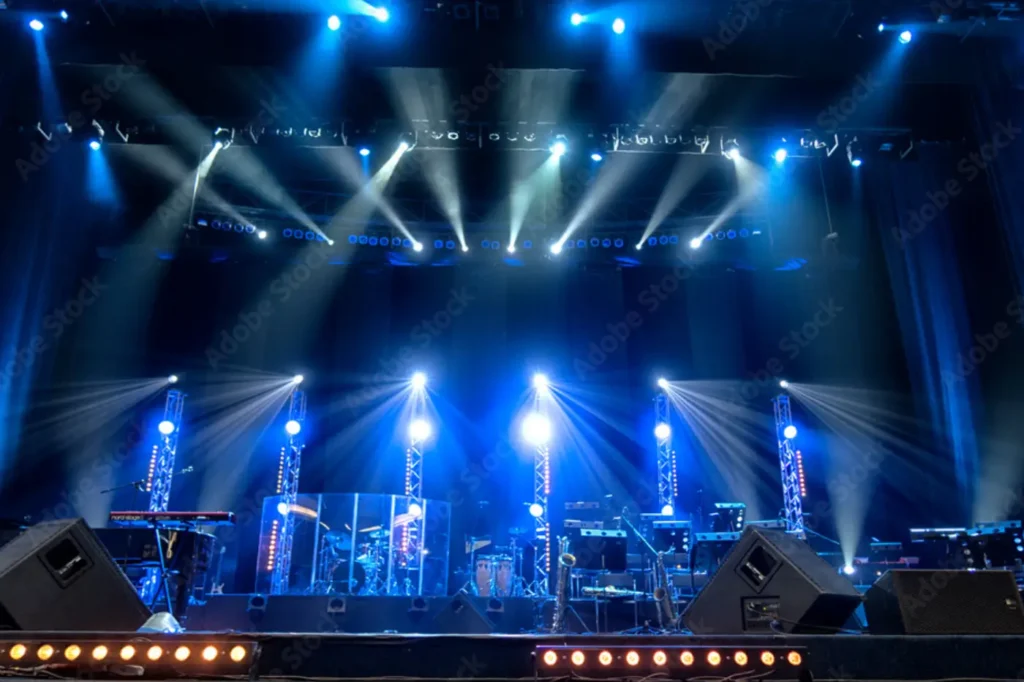
Key Considerations for Material Selection:
- Durability: Steel/aluminum for heavy loads.
- Portability: Lightweight aluminum/modular plastics.
- Aesthetics: Carpet for elegance, LED for high-tech.
- Safety: Non-slip coatings, fire-retardant fabrics.
Traditional Stages
Best for: Theaters, corporate events, award ceremonies.
Materials:
- Frame: Wooden beams, steel supports (for heavy loads).
- Surface: Plywood, MDF (medium-density fiberboard), or laminated panels.
- Finish: Carpet (elegant look), vinyl (easy to clean), or painted wood.
Examples: - Proscenium Stage – Used in theaters (e.g., Broadway).
- Thrust Stage – Extends into the audience (e.g., Shakespearean plays).
- Platform Stage – Simple & modular (e.g., wedding stages).
Modular/Prefabricated Stages
Best for: Trade shows, conferences, temporary setups.
Materials:
- Frame: Aluminum (lightweight) or steel (heavy-duty).
- Deck: Interlocking plastic/fiberglass panels, rubber flooring.
- Accessories: Adjustable legs, ramps, stairs.
Examples: - Portable Stage – Used in school events or outdoor rallies.
- Riser System – For choir stands or speaker panels.
Outdoor/Concert Stages
Best for: Music festivals, open-air performances.
Materials:
- Frame: Steel trusses, aluminum scaffolding.
- Deck: Weatherproof plywood, anti-slip coating.
- Roof: PVC canopy, tension fabric, or metal roofing.
Examples: - Bandshell Stage – Curved back for acoustics (e.g., park concerts).
- Scaffold Stage – Built for quick assembly (e.g., Coachella).
Themed/Custom Stages
Best for: Brand launches, themed parties, immersive experiences.
Materials:
- Structure: Fiberglass, acrylic sheets, 3D-printed elements.
- Decor: Foam sculptures, projection mapping, LED walls.
Examples: - Runway Stage – Fashion shows with glossy acrylic flooring.
- 360° Stage – Audience surrounds performers (e.g., circus acts).
Hydraulic & Elevating Stages
Best for: Dramatic reveals, theater effects.
Materials:
- Mechanism: Hydraulic lifts, steel pistons, motorized systems.
- Platform: Reinforced steel or aluminum with safety rails.
Examples: - Orchestra Pit Lift – Raises musicians during performances.
- Magic Act Stage – For disappearing acts.
Floating Stages
Best for: Lake festivals, luxury yacht parties.
Materials:
- Base: Pontoons (inflatable or fixed).
- Deck: Marine-grade aluminum, waterproof synthetic boards.
Examples: - Barge Stage – Used for fireworks displays over water.
- Dock Stage – For intimate waterfront weddings.
Interactive/Digital Stages
Best for: High-tech concerts, gaming events, virtual performances.
Materials:
- Floor: LED tiles, pressure-sensitive panels.
- Walls: Transparent OLED screens, holographic projectors.
Examples: - LED Stage – K-pop concerts with synchronized visuals.
- AR Stage – Virtual elements mixed with live performers.
Which Stage is Right for Your Event?
- Budget-Friendly? → Modular or traditional stages.
- High-Tech? → LED or hydraulic stages.
- Outdoor Durability? → Steel-truss concert stages.
- Unique Experience? → Themed or floating stages.
